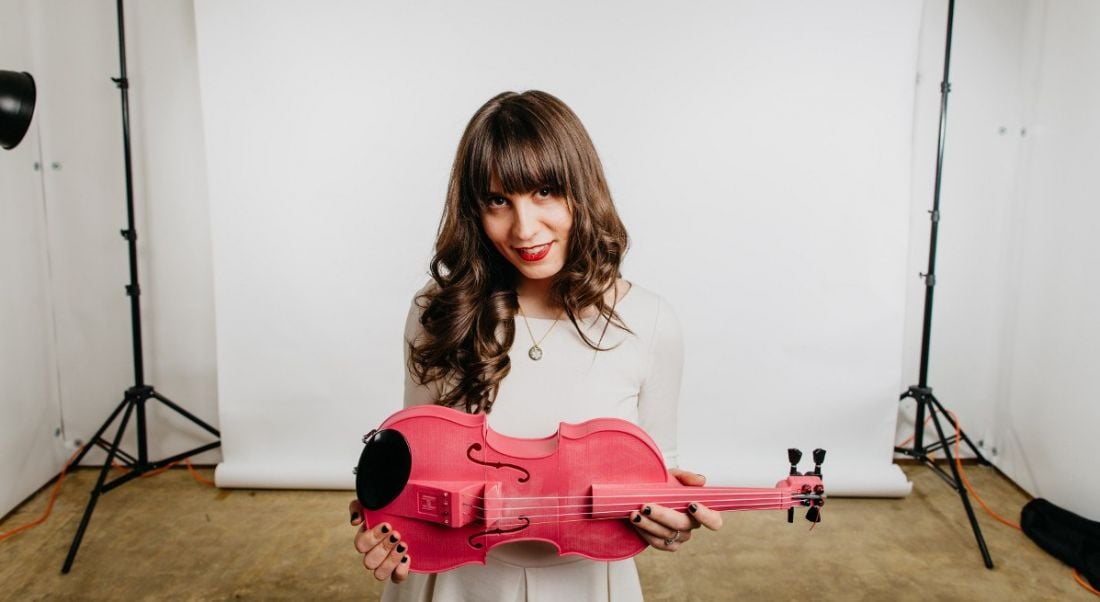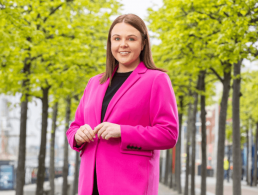From violin to neuroscience, it’s safe to say that Kaitlyn Hova has a lot of strings to her bow.
If you’ve ever wondered how far you push the notion of changing careers, you need only look at Kaitlyn Hova’s story to know that when it comes to dramatic pivots, there are no limits.
From starting her own instrument repair and wedding music business, to studying neuroscience, Hova’s career could be called colourful in more ways than one.
Hova went to at Berklee College of Music for violin performance and then the University of Nebraska at Omaha (UNO) for pre-med.
“It was at UNO that I discovered that I had synaesthesia, a neurological phenomenon in which your senses are inherently crossed. This ability allowed me to physically see sounds as colours, which I thought was completely normal up until that point.”
Upon discovering her unusual condition, Hova switched her pre-med major for neuroscience to better understand the brain.
“I wanted to research synaesthesia but there weren’t many programmes that offered it because it’s difficult to find enough specific cases to research.” So, she and her husband quit their jobs to go to a software boot camp and upskill enough to build what was to become The Synesthesia Network.
‘I used to think that you picked a career and then that was the end of your story’
– KAITLYN HOVA
“I can boil down all of my interests in music, neuroscience and software to an innate need to create and better understand things,” she said.
“Music and software are tools I use to create random ideas I come up with, and neuroscience allows me to better understand how I am (and how others are) processing the world around me.”
When art meets science
While Hova has been drawn to so many different interests over the years, she has found a way to blend them together beautifully. “I see science and technology as a tool to create better music and art.”
Hova, along with her husband, has even created a 3D-printed violin that changes colours as she plays it to display her synaesthesia in real time during performances.
“Thoughtful things like that wouldn’t be possible unless you had a hand in both music and art,” she said.
“The arts foster creative thinking, dedication and empathy, which, when combined with computer science, engineering, research or medicine, creates amazing products and solutions. Because of this, I’ve found that some of the best people in STEM that I’ve shadowed or worked with had some sort of firm background in something creative.”
As well as the marriage of art and science, Hova has found technological advances vital to her work, making her feel more empowered to create. “Because there are so many coding libraries available and complete angels on Stack Overflow, I can dream up an idea for a web app and make it a reality in less than a week,” she said.
Switching it up
Aside from her synaesthesia, which has helped to drive a number of ventures within Hova’s career, what stands out about her journey is the number of pivots she has made and how vastly different they appear, at least on the surface.
“I used to think that you picked a career and then that was the end of your story,” she said. However, it’s clear from her musical background early on, moving into coding and on to neuroscience, that picking one career would never be Hova’s story.
“I wish someone told me that you shouldn’t ‘pick a career’. If you analyse the root of all of your interests, you can better figure out what drives you,” she said.
“When I was young, I thought that I wanted to be a doctor or a movie special-effects expert. It turns out that I wanted to be a doctor because I want to help people and I wanted to be a movie special-effects expert because I like finding creative solutions to problems,” she said.
“I now use music, neuroscience and software to achieve both of those goals at the same time every day.”




